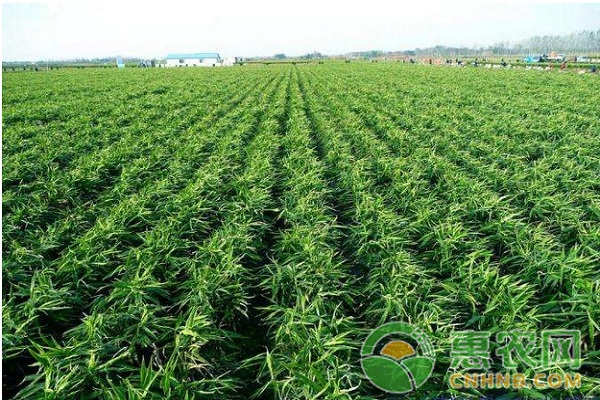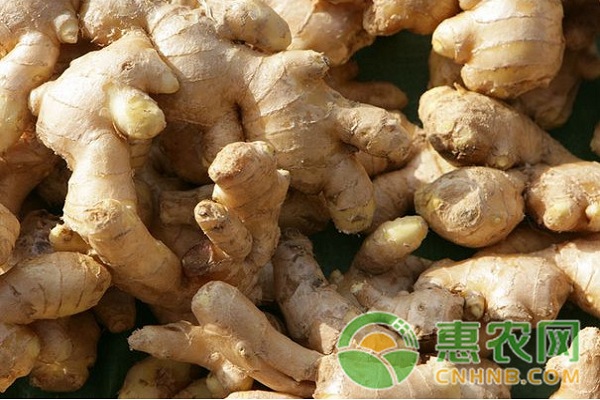Vegetable growers know that there are many varieties of ginger, but do you know the cultivation methods of ginger? Today, we will take the “dongzi ginger†cultivation technology in Jiangjin District of Chongqing as an example.

1 cultivar
The ginger cultivar in Jiangjin District is mainly Dabaijiang, which has the characteristics of strong growth potential, strong buds, crisp meat, rich aroma and excellent quality.
2 Growth conditions
The ginger planting method in Jiangjin District is mainly based on the cultivation of nest ginger. That is, the ginger hole should be pre-made before the ginger is planted, and the ginger that has been germinated is planted in the ginger hole, so it is also called “dongzi gingerâ€.
3 high quality and high yield cultivation techniques
3.1 plot selection
Ginger likes warmth, is not cold-resistant, is not resistant to frost, is not resistant to drought, and is suitable for growing soil with a relative water content of 70% to 80%. It has wide adaptability to soil, but it is rich in soil, rich in organic matter, and permeable. Good, slightly acidic soil (pH 5 ~ 7) is most suitable. Ginger avoids continuous cropping, so it is necessary to carry out one rotation for 2 to 3 years. It is best to carry out water and drought rotation, which can effectively reduce the occurrence of ginger pests and diseases, and also make full use of land nutrition and improve soil fertility structure.
Combined with the climatic characteristics of Jiangjin District, it is advisable to plant ginger with a certain degree of slope, slightly cloudy, deep soil, loose and fertile, good permeability, convenient drainage and irrigation, and the soil type is sandy loam, loam, clay loam or heavy loam. It is better.
3.2 Land consolidation
The selected plots will be deeply sun-dried before spring, and the depth of cultivation will be no less than 50cm. Deep tillage can effectively improve soil structure and increase soil fertility. Organic fertilizer is applied during deep tillage, generally 2000-3000 kg of decomposed organic fertilizer and 50-80 kg of superphosphate are applied per 667 m2.
3.3 for the fight
Due to the high amount of rain in the south, sorghum cultivation is often used. 10d before the planting of ginger, 50kg of decomposed cake fertilizer, 20kg of urea and 30kg of compound fertilizer were applied to the 667m2 of deep-plowed gingerland, and then rotated and ploughed, and the width was 5m, and the gap between the rafts was 1m. It is about 1m deep. After the hoe is prepared, the ginger nest is placed according to the row spacing of 40cm×40cm. The ginger nest is preferably 30cm deep and 13cm in diameter.

3.4 kinds of ginger preparation
Before sowing, remove the rotten, mildew, and weak-growing ginger, soak it in 50% carbendazim 500 times, then dry it, and choose to dry it on sunny days. Generally, dry it for 2 to 3 days. When the surface of the ginger block is bright, it can be germinated. It is often germinated by straw cover and heat preservation. The temperature is controlled at 20~25 °C, and the air humidity is 80%-85%. When the ginger bud is germinated to a length of about 1cm. You can plant ginger.
3.5 timely sowing
Ginger is generally cultivated in the spring. When the temperature is stable at around 15 °C, the planting time is generally from late March to early April. Before sowing, the ginger that is germinated is smashed into small ginger pieces of about 50 g. When ginger is used, it is generally required to keep only one strong bud on each piece of ginger. After the ginger is planted, it can be placed in the ginger nest. Put a sufficient amount of clear manure water in it, and after the manure water has fully penetrated into the soil, put a piece of ginger in each litter and the ginger buds face up. After planting the ginger, it is covered with fine soil, covering a soil thickness of about 1 cm, and then covering the film.
3.6 Field Management
3.6.1 Fertilizer management
The management of ginger and fertilizer should be carried out in combination with soil cultivation and cultivating and weeding. Ginger has a long duration of growth and a high demand for fertilizer. In addition to applying enough base fertilizer, multiple top dressings are required. The types of top dressing mainly choose compound fertilizer and organic fertilizer. When the ginger seedling grows to the top of the film, at this time, it is mostly a bud, uncovering the film, applying 15kg of urea per 667m2, and cultivating the soil to the ginger nest. The height of the soil is 1/3 of the height of the ginger nest, and the soil is watered after the soil; When the seedling grows to 2 buds, apply 25 kg of decomposed oil cake per 667 m2, and then plow the soil to the ginger nest. The height of the soil is 1/3 of the height of the ginger nest. After the soil is poured, the water is poured; when the ginger seedling grows to 3 to 4 buds. For each 667m2, apply 25kg of decomposed oil cake, then pour the soil into the ginger nest to level with the glutinous rice noodles, and pour the soil and water.
Ginger is not resistant to drought and is not resistant to cockroaches. After planting, it is generally not watered before the emergence of the seedlings, so it is necessary to pour the bottom water to prevent drought before emergence; 70% of the seedlings can be poured the first water, although the water requirement is small, but still need to be poured Keep the ground moist and keep it moist. The summer temperature is high, and it should be watered frequently in the morning and evening, which not only replenishes the surface water but also lowers the ground temperature. After the start of the rainy season, if there is too much water in the field, it is necessary to dig trenches in time. After entering the people's prosperous growth period, the water demand should be greatly increased. The principle of “pour deep pouring and no water accumulation†should be adopted to keep the relative humidity of the soil at around 75%. During the whole growth period of ginger, flooding of large water is prohibited.
The root distribution of ginger is shallow. In the process of fertilizer and water management, weeding and weeding are required, but we must pay attention not to damage the ginger root system. In the seedling stage, it is generally necessary to cultivate one or two times, and remove the weeds in time; after the ginger begins to expand, it is necessary to carry out shallow tillage and remove weeds.
3.6.2 shading management
Ginger is a yin crop, which is afraid of sun exposure, so shading cultivation is a key measure. In the hot summer, fresh corn stalks or branches can be used as shading materials to form flower shades. It can also be interplanted with other vegetables or crops to achieve shading. Most of the ginger in the Jiangjin area is planted in contiguous areas, mostly covered with shade nets. After the beginning of autumn, the weather is getting colder and the light is getting weaker. It is necessary to remove the shading.
4 Pest Management
The pests and diseases of ginger should adhere to the methods of prevention and prevention, and take agricultural control, physical control and biological control as much as possible. Even if chemical control is used, low-toxic and low-residue chemicals should be used. The main diseases of ginger are ginger rot disease, ginger spot disease, and ginger anthracnose. Ginger rot disease is a common bacterial disease in ginger cultivation. It is devastating and can be transmitted by wind, rain and underground pests. At present, there is no effective therapeutic agent, mainly through rotation, strict selection, scientific fertilization, etc. ; Jiang scab is an important disease of ginger, major damage leaves, spread by rain sputtering, prevention and treatment methods are mainly crop rotation, irrigation and drainage good selection of plots planted, early onset with 70% methyl thiophanate plus BAI JUN 75% The wettable powder is sprayed on the leaf surface by 600 times. The main insect pest of ginger is Asian corn borer (Ginger). The control method can replace the corn stalk shade with shade net, clean the garden to reduce the insect source, use the trap light to trap, spray Bt emulsion 500-800 times liquid, or 20%. Chrysanthemum and chrysanthemum kill emulsifiable concentrates of 1,000 times each.
5 Harvesting and storage
Jiang Jinsheng to harvest ginger ginger and fresh ginger based. The tender ginger can be harvested just after entering the autumn. The earlier the harvest time, the better the quality, but the lower the yield. Ginger typically harvested before the first frost, in order not to damage fresh ginger, 2 ~ 3d before harvest water pouring 1, the soil moist, loose soil to facilitate harvest.
That's all cave in Jiangjin City Cultivation techniques of ginger, ginger growers interested can refer to. More exciting to do in planting techniques benefit rural network.
Lab Researching Microscope ,Microscope Lab,Biological Microscope,Laboratory Microscope
Ningbo ProWay Optics & Electronics Co., Ltd. , https://www.proway-microtech.com